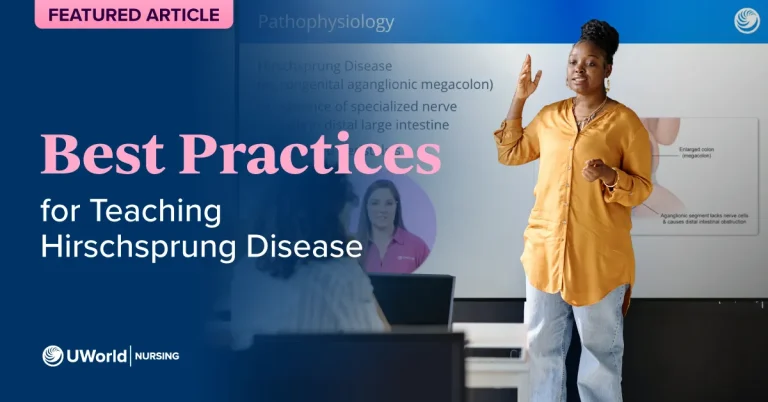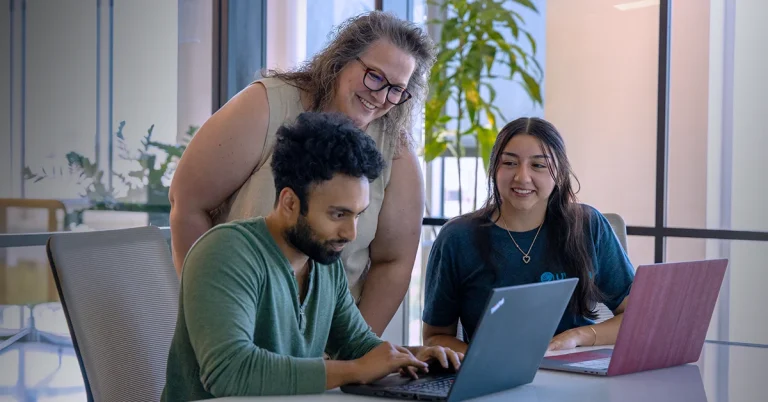By Shanna R. Ingram BSN, RN and Em
ily N. Giddings, MSN, RN, CNE, CCRN
To say that the start of the Fall 2020 academic term looks different than we thought it would is an understatement. As we looked forward to 2020 being the International Year of the Nurse and the Midwife, no one could have predicted just how poignantly timed this designation would be as nurses from all over the world have once again stood on the frontline of another healthcare crisis—the battle against the COVID-19 pandemic. The present pandemic has exposed the true severity of the nursing shortage and heightened our sense of urgency in preparing the next generation of graduating nurses.
Even before the pandemic, nurse educators were exploring creative ways to quickly grow the nursing workforce to alleviate the expanding nursing shortage. According to the World Health Organization report State of the World’s Nursing 2020, nurses constitute 59% of the healthcare workforce, and they predict that there needs to be an 8% yearly increase worldwide for the next 10 years to alleviate this shortage. This already daunting endeavor is made even more challenging as nursing schools have been forced to find new ways to adequately prepare learners for the realities of practicing in our current healthcare climate while keeping them safe from coronavirus.
While some schools of nursing were able to quickly adapt their curriculum to face this new challenge, others lacked sufficient preparation. As a result, the response to change has been varied and included closures of schools, delay of graduation, replacement of clinical hours with simulation time, and movement to 100% online teaching. As we enter this fall semester, there are a range of responses to how students will be brought back to school including fully online programs, hybrid coursework, or even a return to on-campus learning.
Regardless of the plan, we must all decide how to approach several current trends and issues in nursing education including:
How do we make the most of online learning?
For some educators, the online learning space feels comfortable and offers many exciting possibilities for engaging learners with a variety of learning preferences. To others, the virtual classroom is new and lacks the ability to gauge and coach certain content, such as interpersonal skills. However, many best practices in education can be applied to the virtual learning environment.
Regardless of where learning occurs,
Connection matters
Maintaining open communication is vital to encourage learning engagement. For many nurses, a connection to a beloved instructor fostered their love and perseverance in pursuing their career. To cultivate connection in the online classroom, consider sending individualized communication to students early in the semester. Learn students’ names and converse with them when entering the virtual classroom. Remember, the relationship between peers also promotes involvement and cognitive and affective learning. Provide students with a place to collaborate, whether that is an online meeting room or discussion board.
Active learning is king
Despite learning occurring on a screen, nurse educators should strive to make learning active. Problem-based or experiential learning encourages students to think about what they know and how it applies to what they are studying. There are many resources available that engage learners in active learning from unfolding case studies to the newest virtual simulation technology. Regardless of format, look for resources that require students to apply their learning.
How do we teach students to learn and think?
The amount of knowledge that is required to safely practice nursing continues to expand faster each year. Focusing on learning and thinking rather than providing a list of what students need to know prepares them to be the lifelong learners they need to be successful nurses. Core principles that support the growth of thinking and learning including
Reflection
Reflective exercises—such as journaling, discussion, debriefing—ask students to consider their thinking and allow faculty to evaluate students’ underlying knowledge and assumptions. It is during reflection that learners explore the “why” behind their actions and the consequences of those actions.
Rationales
To develop clinical judgment, learners must understand this “why” or rationale for their clinical decisions. Asking questions that require learners to provide discrete answers often require only recall of information. Similar to asking patients open-ended questions when determining their diagnosis, so should educators ask students open-ended questions to better “diagnose” their thinking. Consider the difference between these two questions:
- What client symptoms support the diagnosis of myocardial infarction?
- How does each piece of client data relate to the diagnosis?
Question one requires learners to select which patient subjective and objective findings match their memorized list of signs and symptoms of myocardial infarction while question two requires learners to first determine if each finding is pertinent or not and then explain the pathogenesis that links the finding to the diagnosis. When creating reflection and discussion questions, consider whether the question requires sequential thinking, or requires more than one step in their thinking process to arrive at the correct answer.
When learners understand their thinking, they can begin to make appropriate clinical judgments, which is the focus on the Next Generation NCLEX.
How do we prepare for Next Generation NCLEX® (NGN)?
In the midst of all of these uncertainties and changes, nurse educators also have Next Generation NCLEX looming in their minds. While the transition is at least a few years away, schools of nursing must begin planning now to allow adequate time for changes in pedagogy and evaluation across their curriculum. Key ideas to keep in mind as faculty explore products and new processes include:
The purpose of the NGN is to ask better questions.
These better questions are designed to determine learners’ clinical judgment, and the National Council of State Boards of Nursing (NCSBN) Clinical Judgment Measurement Model (CJMM) outlines exactly what that entails.
Cozy up to the CJMM.
Designing new learning and evaluation materials for the virtual classroom presents a unique opportunity for educators to get comfortable with NGN. The CJMM is an excellent framework to guide content creation while aligning evaluation methods with clinical judgment in the style of the Next Generation NCLEX. Keep it handy as a reference, especially during item writing.
How can I support student diversity and inclusion?
Nursing students are among the most diverse student groups, coming from every race, age, and creed. Recent events have highlighted our need to stand against systemic racism and instead embrace and celebrate such diversity of the nursing workforce. Additionally, students may tend to feel isolated from instructors and peers in the online learning environment. Some practical methods of encouraging a sense of connectedness among diverse student groups include:
- Supporting students to obtain safe platforms for reflection and dialogue, such as student groups or organizations embedded within the learning management system. Students should feel empowered to lead discussion groups, while instructors should serve only to facilitate without detracting from student-driven conversation.
- Encouraging students to participate in diverse professional nursing associations, such as the National Black Nurses Association or National Association of Hispanic Nurses.
- Extending additional support to students by connecting them with campus mental health resources.
Additionally, faculty should closely examine any bias within themselves or university systems. Academic and financial support services should guarantee equitable opportunities for all students, as minority representation in the next generation of nurses depends on our efforts to recruit and retain diverse students.
Join in the conversation: We will be diving deeper into each of these topics and many others throughout the semester on our educator blog. As we do so, we would like to invite you into the conversation. If you have a passion for or expertise in one of these areas and would like to share it with us, we want to hear about it. Or, if you have other topics you would like us to explore, please contact us. We are always looking for expert nurse educators to contribute to the discussion as one of our Nursing Faculty Consultants.





